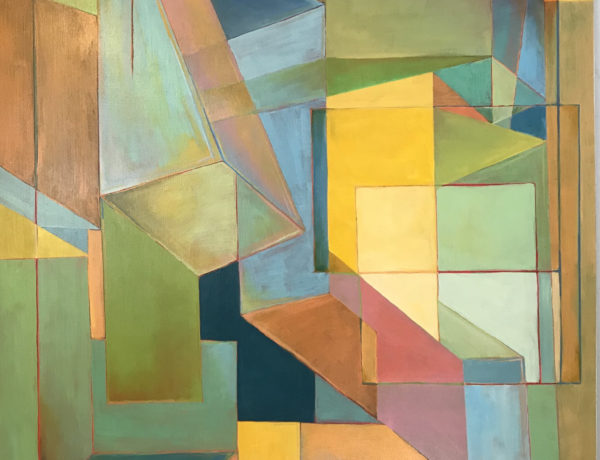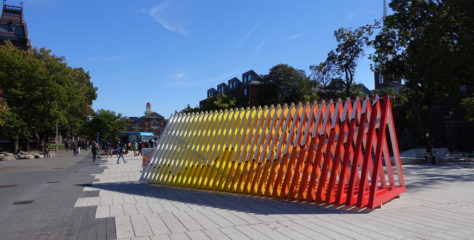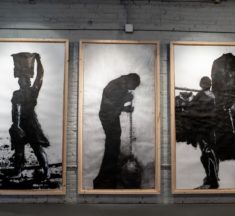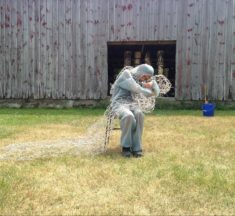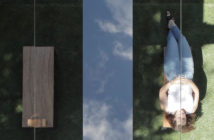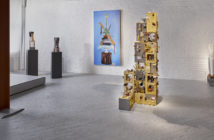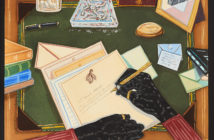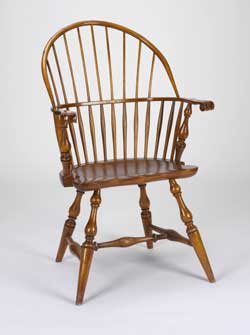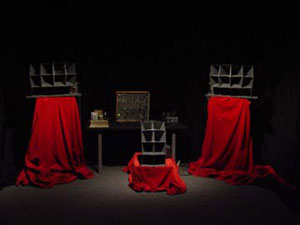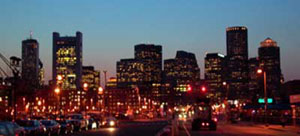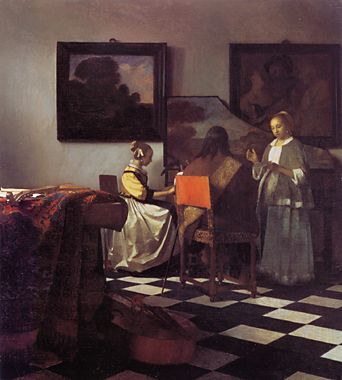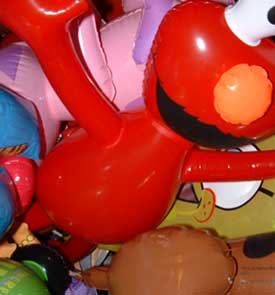Newest Features
By MICAH J. MALONE Print this article Spindles and Spokes: Windsor Chairs and their Legacy in America, now on display at the RISD museum, is a show of one of the most prolifically produced chairs in the last two centuries. First appearing in England in the 1720s and shortly thereafter in America, these chairs have withstood the test of time and have continually served as a symbol for “dignified” and “honest” furniture making. “Windsor” is the generic name for furniture with turned legs with back spindles doweled into a solid seat. This…
By BEN SLOAT Print this article In his new “Instant Traveler” show at Clifford Smith Gallery, Youngsuk Suh displays a large-scale photographic series of magnificent national park settings in Hawaii. The stage is what one would expect in such a paradise: the water is cool and inviting, the clouds are heavenly, and the greenery, long since absent in this part of the world, is lush and intoxicating. Even in the distance, the volcanic mountains speak turquoise and maroon, we all wish we were there, because we like nice things. But things are…
By MATTHEW GAMBER Print this article In 1975, the International Museum of Photography at George Eastman House in Rochester rang a death knell on the landscape photography as popularized in the previous decades by artists like Ansel Adams, Eliot Porter, Paul Caponigro, and Minor White. The show was christened “New Topographics: Photographs of a Man-Altered Landscape” by curator William Jenkins to describe a new trend in landscape photography: a pseudo-anthropological, somewhat ironic observations of flat space usage by means of an objective and detached viewpoint. This new attitude was equated with a…
By TYLER CANN Print this article Some forty years ago, “Sound and Light” gallery shows were all the rage. The art world buzzed with rhetoric about pop, participation and the merging of art and technology. Synched-up multi-sensory artworks trumpeted the dawn of a new interactive utopia and critics noted the failings of a hopelessly kitsch “novelty art”. Remnants of the sixties’ kinetic light-show craze, and the far longer history of dazzling public spectacle are still with us. Where high municipal ambition and minor historical interest coincide, one can sometimes find “Son et…
By MEG ROTZEL Print this article Many of the works you do are hand-built electronics made from vintage parts. I’m curious as to how you position your piece historically within an art world that is crushing on new medias of digital sound and image. JR: People have a hard time classifying my art, because it deals directly with technology, but is clearly not “New Media” in the common use of that term, which seems to pertain exclusively to digital technologies. I am interested in electronics and sound reproduction, and I am also…
By JAMES HULL Print this article Boston has some of the same self-image issues that Atlanta does, the city where I lived until 1996. Both cities think of themselves as conservative and strive to be “World Class Cities”. They overlook their assets: they are beautiful, they have trees and open space everywhere and they are highly sought after places to live and work. Instead they dwell on a history of losing both artists and art buyers to New York City. Boston’s “livability” and its history are its main attractions. It is actually…
By THE NEWS EDITOR By now, almost every art-goer in Boston is eerily familiar with the empty, ornate frames hanging on the walls of the Isabella Stewart Garnder Museum – reminders of a tragic and heartbreaking theft. The armed raid that took place almost fourteen years ago on Sunday, March 18, 1990, was dazzlingly simple. Two men dressed as Boston police officers convinced gallery guards to allow them to enter. The guards were tied up and in an 80-minute spree, the thieves relieved the museum of 13 pieces in total: 11 paintings…
By SEAN HORTON Why Big, Red and Shiny? Because it is exactly what Boston needs – something to stand up, big and tall for the art and artists of this fine city. This humble arts journal was started with the simple premise that there is more good art being made and shown in our immediate surroundings than people realize. So just like that – Big, Red and Shiny was born. Most of the art seen within the area isn’t big, red or shiny – it doesn’t proclaim its presence. It’s more of…

